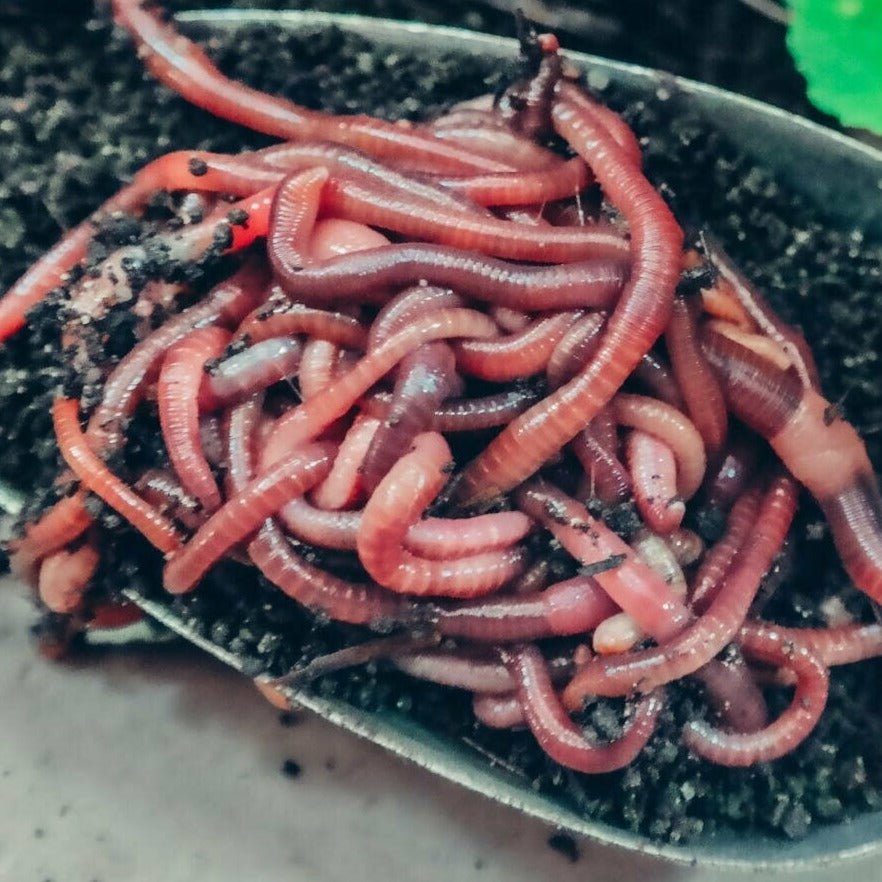Red Wigglers: The Unsung Heroes of Organic Waste Recycling
Red wigglers, or Eisenia fetida, offer as vital agents in the natural waste recycling procedure, transforming disposed of materials right into valuable vermicompost. As the world significantly looks for options to deal with waste accumulation and improve farming performance, understanding the function of these worms becomes crucial.
What Are Red Wigglers?
The amazing strength of red wigglers, clinically recognized as Eisenia fetida, highlights their critical function in organic waste recycling. These small, reddish-brown earthworms are normally discovered in disintegrating raw material, such as compost heap and manure loads. Lake Hickory Bait. Unlike other earthworm species, red wigglers flourish in nutrient-rich atmospheres and are extremely effective at damaging down natural materials, making them necessary for vermicomposting

(Red Wiggler Express)Along with their role in waste decrease, red wigglers contribute to soil wellness by improving soil structure and aeration via their burrowing tasks (Lake Hickory Bait). Their visibility in composting systems not only improves disintegration prices however likewise promotes a sustainable strategy to squander monitoring, showing their value in eco-friendly preservation efforts
Advantages of Composting With Worms
Composting with worms, particularly red wigglers, supplies various benefits that boost both waste monitoring and soil health and wellness. First, these worms efficiently damage down organic waste, transforming it right into nutrient-rich vermicompost that enhances soil. This process accelerates decomposition, permitting a much faster recycling of kitchen area scraps and various other natural materials compared to traditional composting techniques.
In addition, the vermicompost generated by red wigglers is including helpful microorganisms, which help improve soil framework, aeration, and dampness retention. This boosts the total health of plants, advertising strenuous development and increased yields in gardens and farming setups. Moreover, using worms in composting decreases the production of greenhouse gases, such as methane, adding to a much more sustainable waste administration system.

How to Start Vermicomposting
Establishing a vermicomposting system is an uncomplicated procedure that can yield significant benefits for both waste monitoring and soil enrichment. To begin, choose an ideal container, such as a plastic container or wooden box, with adequate air flow openings to ensure proper airflow. The measurements must preferably be around 2 feet by 3 feet, allowing sufficient space for the worms to flourish.
Following, prepare bed linen product, which can be composed of shredded newspaper, cardboard, or coconut coir. This bedding must be moistened to create an ideal habitat for the worms. When the bed linen remains in location, introduce red wigglers (Eisenia fetida) into the bin, typically around one extra pound of worms for every square foot of surface location.
Following the placement of worms, include organic waste, such as fruit and vegetable scraps, Continue coffee premises, and smashed eggshells. Prevent including milk, meat, or oils, as these can produce smells and draw in bugs. Place the container in a shaded, temperature-controlled location to keep optimum problems for worm activity. With these actions, you will successfully initiate a vermicomposting system that contributes to sustainable waste administration and improves your soil.
Maintaining a Healthy And Balanced Worm Container
(Red Wiggler Express)Maintaining a worm bin prospering calls for routine interest and like make certain the wellness of the red wigglers and the efficiency of the composting procedure. Proper maintenance starts with keeping an eye on the wetness degrees; the bin must be moist yet not waterlogged. An excellent guideline is to keep an uniformity similar to a wrung-out sponge.
Gently mixing the bedding and food scraps every few weeks prevents compaction and guarantees that all worms have accessibility to oxygen. Furthermore, it is crucial to feed the worms suitably.
Temperature guideline is another important aspect. Red wigglers thrive in a series of 55 to 77 levels Fahrenheit. If the container comes to be also warm or cool, the worms might end up being stressed - Lake Hickory Bait. Finally, regularly examine for signs of wellness, such as worm populace development and the existence of healthy spreadings. By faithfully managing these variables, one can maintain a robust and efficient worm container.
Effect on Sustainable Living
The successful maintenance of a worm bin not only benefits the health and wellness of red wigglers however likewise adds dramatically to lasting living practices. By recycling natural waste, such as kitchen scraps and yard particles, red wigglers help draw away significant amounts of product from garbage dumps. This reduction in waste not only reduces greenhouse gas emissions however additionally minimizes the ecological worry connected with waste administration.
Moreover, the spreadings produced by red wigglers act as a nutrient-rich organic plant food, improving soil health and wellness and advertising plant growth. This natural choice to chemical plant foods supports lasting farming and gardening practices, minimizing dependence on artificial inputs that can harm ecological communities. Additionally, worm composting cultivates understanding of waste management, urging individuals and areas to adopt more sustainable practices.

Verdict
In summary, red wigglers offer as essential contributors to natural waste reusing through their efficient decay of natural materials. Their ability to produce nutrient-rich vermicompost boosts dirt health and wellness and sustains lasting farming methods. By integrating vermicomposting right into waste management strategies, people and communities can significantly lower waste while promoting environmental sustainability. The role of Eisenia fetida in promoting healthy and balanced ecosystems emphasizes the value of these organisms in accomplishing sustainable living and enhancing soil fertility.